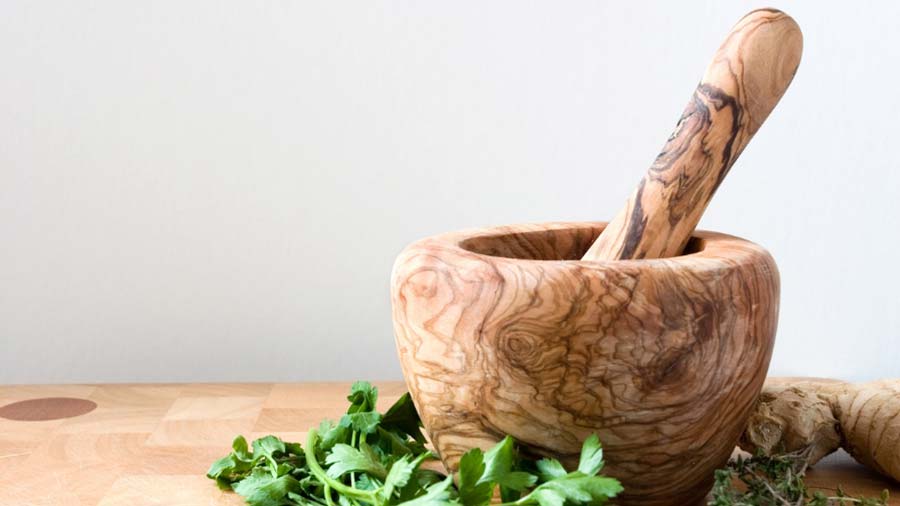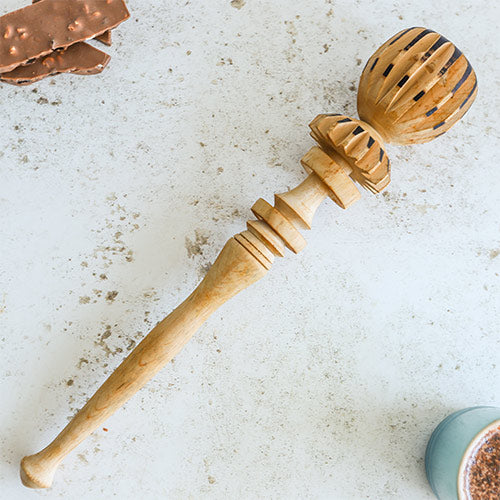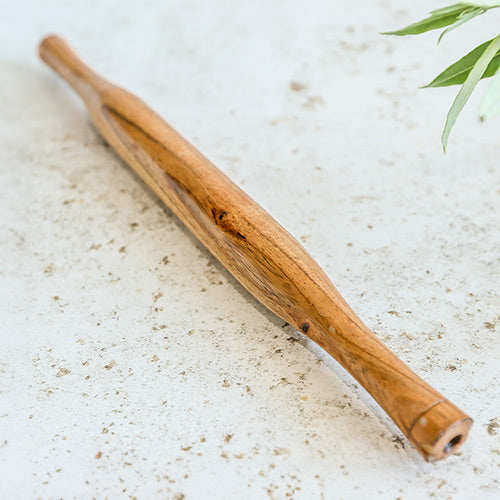Pestle and mortars have been used for centuries in many different cultures, it is believed to have originated in ancient Egypt and is thought to have been used for preparing food such as grinding grains, spices, and herbs. It is also believed to have been used for medical purposes. The use of the pestle and mortar has been found in various ancient cultures, but it is most commonly associated with Asian, African, and Middle Eastern cuisine. It is believed to have spread to Europe and other parts of the world as a result of trading in the Middle Ages. The pestle and mortar is still used in many parts of the world today, primarily in the preparation of food. When it comes to grinding herbs, spices, and other ingredients, a pestle and mortar is an essential kitchen tool. But with so many materials to choose from, it’s hard to know which one is the best. We’ll take a look at the pros and cons of stone, wood, and ceramic pestles and mortars and see which one is best for your kitchen.
Stone Pestle and Mortar

Stone pestles and mortars are classic kitchen item, they’re typically made from granite or marble, which is a durable and hard material that can stand up to heavy-duty grinding. Stone is also non-porous, which means it won’t absorb odours or flavours like other materials can and has a very hard base for grinding spices, seeds, and nuts. They are also widely available and relatively affordable. The downside of stone is that it’s heavy and difficult to use. It can take a while to grind your ingredients, and you may end up with unevenly ground spices. Stone is also vulnerable to chips and cracks, so it won’t last as long as other materials.
How to care for a stone pestle and mortar
To care for a stone pestle and mortar, the first step is to rinse the pestle with warm water and a mild detergent. Make sure to dry it completely before using it again. Additionally, you should avoid overworking the surface of the mortar or the pestle, as this may cause it to wear and tear more quickly. Finally, it's a good idea to use a light cooking oil, such as olive oil, to season the mortar and pestle before storing it away. This will help to keep the stone from drying out and cracking
Wooden Pestle and Mortar

Wooden pestles and mortars are often used in traditional cooking. They tend to be lighter than stone and easier to use. Wooden pestles and mortars are also less likely to chip or crack, so they can last for many years. The downside of wood is that it can absorb flavours, odours, and bacteria. If you don’t clean your wooden pestle and mortar thoroughly after use, you may end up with the flavours and odours of previous ingredients in your next dish.
How to care for a wooden pestle and mortar
Caring for a wood pestle and mortar can help you get years of use out of the set. Here are a few tips on how to keep your wood pestle and mortar looking and working like new. Make sure to regularly clean your wood pestle and mortar. Start by using a soft cloth and warm water with a mild soap or detergent. Then, lightly scrub the set with a soft bristled brush, making sure to sweep away any food particles or other debris. Rinse the set with clean water, and then dry with a soft cloth. After the wood pestle and mortar have been cleaned, use a food-grade mineral oil to condition the wood. Make sure to follow the instructions on the mineral oil bottle. This will help to keep the wood from drying out and cracking, which can occur when the wood is exposed to high temperatures and humidity.
Make sure to avoid exposing your wood pestle and mortar to excessive heat or humidity. If the set does come in contact with heat or moisture, make sure to dry the set immediately. This will help to keep the wood from warping or splitting. With regular use and care, your wood pestle and mortar should last for many years. To keep the wood looking great, however, you may eventually need to oil the mortar. Use a food-grade mineral oil to do this. Make sure to follow the instructions on the bottle, and only apply a thin layer of oil to the mortar. With these tips, you can keep your wood pestle and mortar looking and working like new. Regular cleaning and conditioning will help keep the wood from drying out or cracking, while avoiding excess heat and moisture will help to avoid warping or splitting. With regular use and care, your wood pestle and mortar should last for many years
Ceramic Pestle and Mortar

Ceramic pestles and mortars are made of unglazed clay. They’re light and easy to use, and they won’t absorb odours or flavours. Ceramic is also very durable and less likely to chip or crack. The downside of ceramic is that it’s not as hard as stone or wood, so it can take longer to grind your ingredients. Ceramic also isn’t as durable as stone or wood, so it may not last as long.
How to care for a ceramic pestle and mortar
Caring for a ceramic pestle and mortar is important if you want to keep it in good condition and use it effectively. Here are a few tips to help you properly care for your ceramic pestle and mortar. Clean the mortar and pestle regularly with soap and warm water. Make sure you let it air dry completely before storing it. Store your mortar and pestle in a cool, dry area away from direct sunlight. This will help prevent fading and cracking of the ceramic material. If your mortar and pestle becomes stained, you can use a mild scrubbing pad to remove the stains. Do not use abrasive cleaning agents as these can damage the ceramic material.
If you are using the mortar and pestle for grinding spices or other herbs, you should only use it for this purpose. Do not use it to grind anything else as this could damage it. You should also make sure to use separate mortar and pestles for different types of materials, such as wet and dry herbs. This will help ensure that the flavours of each material do not mix. By following these simple tips, you can help ensure that your ceramic pestle and mortar is kept in good condition and will last a long time
Choosing the Best Material for You
When it comes to choosing the best pestle and mortar for your kitchen, it really depends on your personal preference. Each material comes with its own set or pros and cons. A few other options that we didn’t go into detail is stainless steel, it’s not very good as a pestle and mortar because it tends to be more expensive and may not be as effective at grinding spices. Plastic and glass are not recommended as they are less durable and may not grind ingredients as effectively but also they can be easily broken and are not very hygienic.










